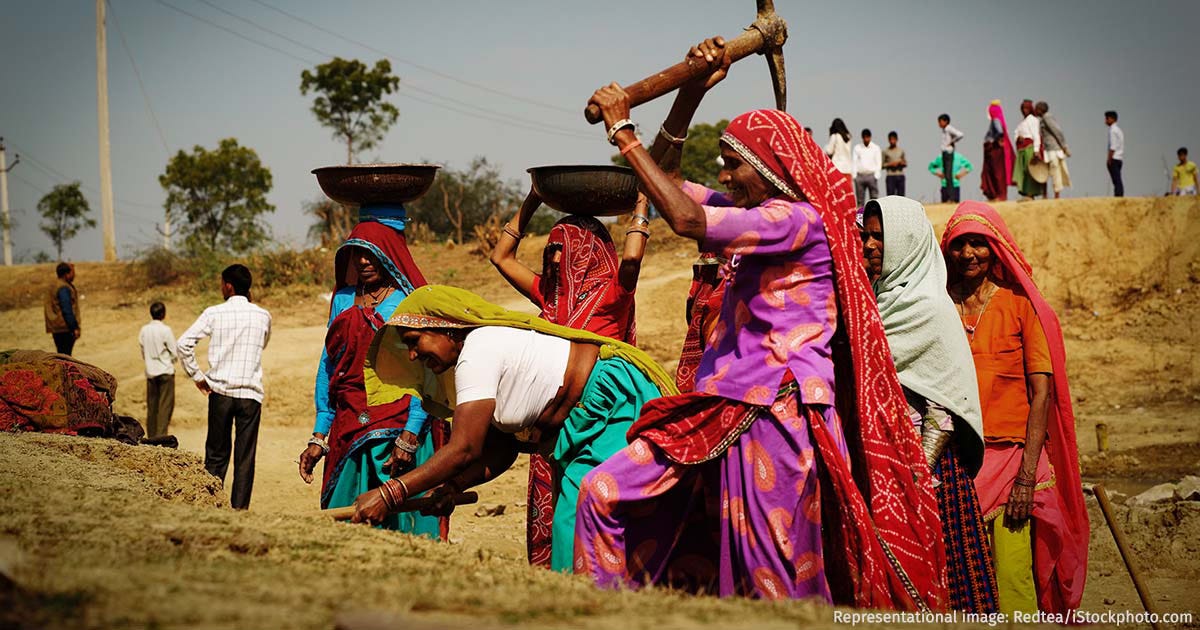Mind the Gap
This week, the state of 20-year-old MGNREGS, the hurdles in the path to TB elimination, and the groundwater crisis in Haryana
Ambitious plans, without adequate resourcing, become mere pipe dreams. This week we examine three critical resource challenges facing India: the persistent funding gaps in national programs and their human impact.
As the MGNREGS rural employment scheme marks its 20th anniversary with nearly ₹975 crore in unpaid wages, the country's tuberculosis elimination goal appears increasingly out of reach with just nine months left and only two-thirds of the required funding allocated. Meanwhile, in Haryana, government subsidies designed to help farmers are accelerating a groundwater crisis as tubewells pump ever-deeper to irrigate water-thirsty wheat and paddy crops.
Across all three stories, we see a common thread—ambitious national goals undermined by implementation gaps, inadequate funding, and policies that sometimes create unintended consequences for the very communities they seek to serve.
MGNREGS at 20: Rural Jobs Program Faces Persistent Wage Delays
Nearly ₹975 crore in unpaid wages are hanging over India's flagship rural employment scheme as it marks its 20th anniversary. Government data shows the Mahatma Gandhi National Rural Employment Guarantee Scheme continues to struggle with financial shortfalls despite budget adjustments. The program, which guarantees 100 days of work per household, is facing stagnant budgets that aren't keeping pace with actual expenditures—the 2024-25 allocation is actually 4% lower than last year's spending.
The ripple effects are significant: millions of households that demand work aren't receiving it, and when they do, a significant number of those face delayed payments. States like Maharashtra (₹380 crore) and Bihar (₹67 crore) report the highest pending wages, while Tamil Nadu and Uttar Pradesh show severe funding deficits. A recent Parliamentary committee has urged the rural development department to fix these financial mechanisms, noting that the entire scheme's success depends on timely fund releases. Vijay Jadhav delves into the numbers.
India's TB Elimination Goal in Jeopardy as Funding Falls Short
With just nine months left until India's self-imposed 2025 tuberculosis elimination deadline, government data shows the program is getting only two-thirds of the funds needed. While spending has increased fourfold since 2014, the Rs 83.13 billion allocated falls well short of the Rs 123.27 billion outlined in the National Strategic Plan.
Despite purchasing 32.6 million strips of medication this year (triple last year's amount), persistent drug stockouts continue plaguing the system. A March letter from concerned doctors highlighted critical shortages across multiple states, with some facilities resorting to pediatric formulations or reducing dosages to cope.
Perhaps most concerning is that only 2.1% of the budget went toward diagnostics through 2023-24, despite detection being crucial for elimination. Staff vacancies compound these issues—Maharashtra reports a staggering 74% of TB doctor positions unfilled, while Bihar faces 34% program vacancies. With TB cases only dropping from 211 to 199 per 100,000 since 2016, the elimination target of 44 looks increasingly out of reach. Nushaiba Iqbal reports.
Haryana's Groundwater Crisis Deepens as Farm Subsidies Fuel Water-Intensive Crops
Haryana's farmers are caught in a vicious cycle—pumping ever-deeper for groundwater to irrigate water-thirsty wheat and paddy crops, while government subsidies make it cheaper to keep drilling borewells. Analysis shows groundwater levels have dropped significantly in 16 of 22 districts in the state over two decades, with Ambala, Kaithal and Karnal hit hardest.
The hidden costs are mounting. Farmer Sandeep Singh, who grows paddy and wheat on 30 acres in Thari village, spends nearly ₹5 lakh each time he needs to drill deeper for water. "Farmers are stuck in quicksand and there is no profit," he laments. Small farmers, unable to afford new tubewells, fall into debt traps with both banks and private lenders.
The culprit? Government policies that inadvertently encourage unsustainable practices. Electricity subsidies make pumping nearly free (just 8-10 paise per unit versus the unsubsidized ₹6.67), while inadequate canal water and limited micro-irrigation funding leave farmers few alternatives. Districts with the highest subsidized electricity usage are both the most water-stressed and the top wheat and paddy producers—a troubling correlation that signals impending crisis if water use remains unregulated. Utkarsh Tripathy explores a phenomenon with dire consequences.
In IndiaSpend Hindi, Jigyasa Mishra reports on village community-driven efforts to clean up the endemic litter issue in Himachal Pradesh; Azeem Mirza has an intriguing ground report on a tiger rescue that involves smearing cow dung and not bathing for several days; and Pavan Kumar Maurya presents a photo-essay on the plight of the workers in the Chandasi coal market.





